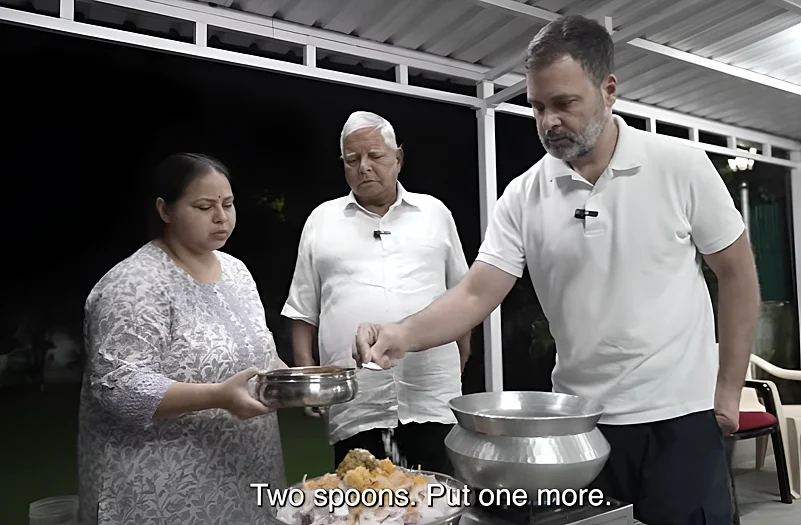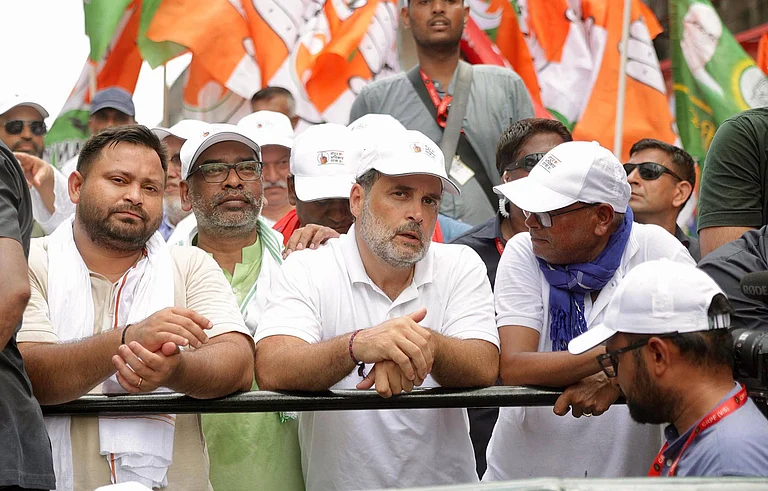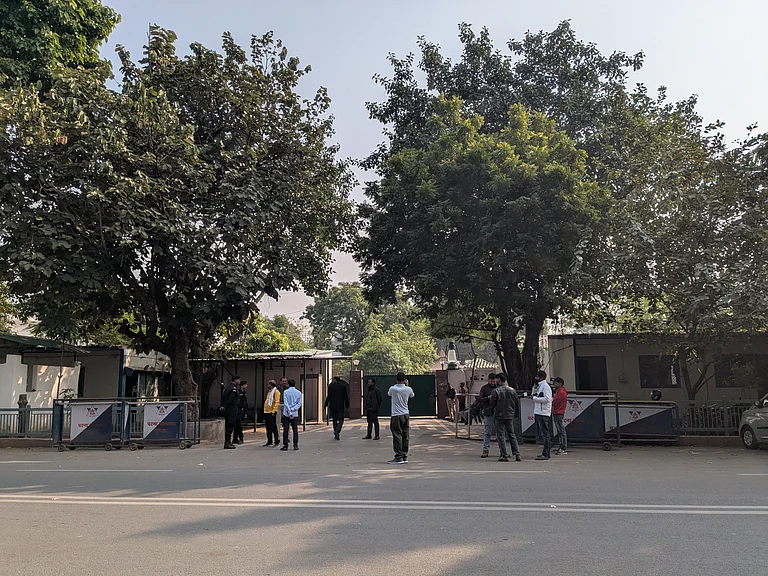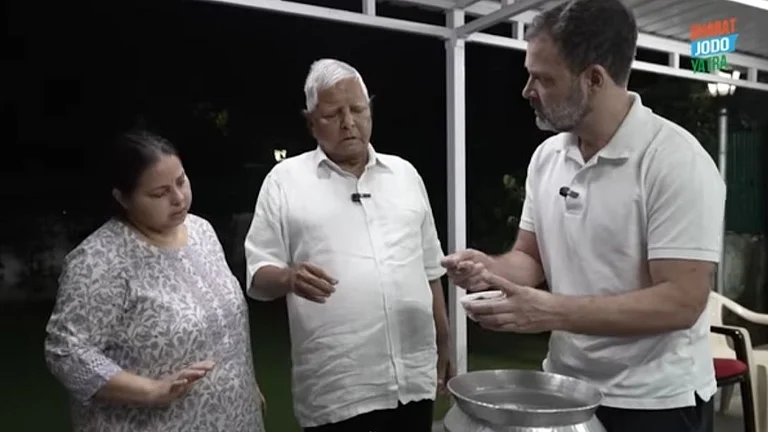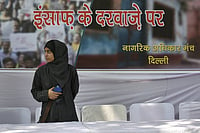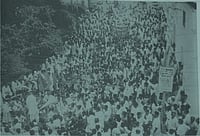
Travelling across Bihar during the elections, the author finds that mutton is more than a meal — it’s woven into caste, culture, and everyday dignity.
Unlike in parts of North India where food is policed, Bihar’s kitchens remain defiantly inclusive — where Rajputs, Yadavs, and Dalits share a common appetite.
Amid political noise and moral posturing, one truth endures from Ranveer’s roadside dhaba: Whoever comes to power, we’ll keep eating meat.
My mother has a theory about people. She says there are only two kinds in this world — those who eat so they can live, and those who live only so they can eat. The second kind, she says, don’t just enjoy food — It is existential for them. Food is what makes life make sense.
If you haven’t guessed already, I clearly belong to that second category.
I’m what many would call a “ghostkhor.” The word comes from ghosht, which means red meat. It’s Urdu, and it has to be pronounced with the throat — that deep, scratchy خ sound. In simple terms, it means “a meat-eater.”
As a journalist who has spent most of his career reporting in Delhi and Uttar Pradesh, I’ve grown used to a largely vegetarian world on the road. In UP, under the Adityanath government, non-vegetarian food has quietly disappeared from most public places. You don’t notice it at first — until one day, you start missing the smell of frying meat.
Then came Bihar.
I was there for the assembly elections, travelling for about ten days across the state. My companion on this trip was a friend from UP — a Brahmin and a committed vegetarian.
Though I grew up in Patna, this was the first time I was travelling through Bihar as a reporter — which, as I now realise, is an entirely different way of seeing your home.
After half a day of standing in dust and slogans at an election rally in Samastipur, we stopped at a roadside dhaba. The place looked ordinary — tin roof, plastic chairs, the usual. But the moment the waiter came with the menu, I knew something was different.
He started reciting the dishes: bhuna mutton, mutton curry, mutton rogan josh. Then came two kinds of fish, and a few other meat dishes.
I know this sounds dramatic, but it felt like a blind man had just regained his sight. I just sat there, staring at the menu like it was poetry.
Behind the counter sat two brothers who owned the place. When they saw my face, they started laughing. Ranveer, the elder one, said, “Bihari mutton ke bina reh hi nahi sakte.” (Biharis can’t live without mutton.)
They were Rajputs. And as Ranveer explained, it wasn’t just them — most upper castes, especially Rajputs and Bhumihars, and even Koeris, Kurmis, and Yadavs — the “forward among the backward” castes — are all devoted meat eaters.
I asked if I could see the kitchen. They didn’t mind. Inside, the cook — a tall, thin man in his forties wearing a kurta-pajama — was stirring something that smelled divine. As someone who lives to eat, I have enormous respect for those who feed me. There’s something sacred about that relationship — trust, gratitude, quiet admiration.
When I asked what was cooking, he grinned. “Today’s our first day after Chhath,” he said. “Everything’s fresh — chicken, mutton, fish.” And like a man who’d been hungry for years, I ordered one plate of each.
I can’t really describe that meal — only that I still think about it sometimes. The mutton melted, the fish was crisp, the rice perfect. I finished almost all of it, with a little help from our driver, Parshuram — a Bhumihar, and thankfully, not a picky eater.
When I stepped out, Ranveer was eating his own lunch — rice and a bowl of mutton curry. He told me chicken only became popular recently. “It wasn’t something good families ate,” he said. “Chicken came from the cities. Mutton is ours.”
There’s also a ritual side to it. Mutton is tied to the Hindu tradition of bali — animal sacrifice offered to the gods. Festivals like Chhath or Durga Puja are incomplete without it.
Upper-caste families might have eaten meat less publicly, but much more privately. The Yadav, Koeris and Kurmis, the "forward among backward caste" are quite fond of mutton. For Yadavs, it was part of their livestock culture. For Dalits and backward castes, meat became a quiet symbol of dignity — something earned through labour, not granted by status.
Ranveer chuckled, “In our house, mutton on Sunday is a ritual. And we’re very particular about how it’s made.”
Meanwhile, seeing so much meat in his vicinity, my vegetarian friend refused to eat anything at Ranveer's dhaba. In Alinagar, we came across a make-shift dhaba that offered only mutton and rice thali.
Food habits, after all, tell you a lot about a society — they reveal how people see purity, pleasure, and power.
For all its backwardness, Bihar doesn’t police your plate. I grew up in a Muslim ghetto in Patna, where beef was freely available. I took that freedom for granted. Only when I moved to Delhi did I realise how precious it was.
I was never particularly fond of Bihar.
But this trip changed something.
I’m back in Delhi now — yet I miss being on the road in Bihar, the smells, the food, the easy warmth of its people.
As we got up to leave, Ranveer called out with a grin:
“Jo bhi satta mein aaye, hum maans khate rahenge.”
(Whoever comes to power, we’ll keep eating meat.)
And honestly, that one line could be Bihar’s manifesto.







